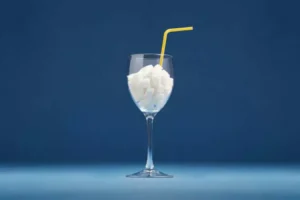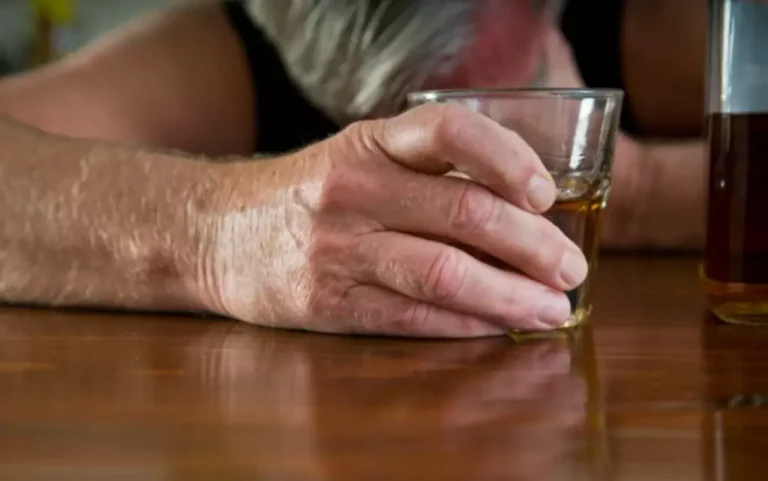
Once the condition has progressed, surgery is probably the best option. Unfortunately, if left untreated, rhinophyma can obstruct the nostrils and affect breathing, deeming a medical evaluation worthwhile. “Alcoholic nose,” or drinker’s nose, is a skin condition commonly identified by a red, bumpy, or swollen appearance of the nose and cheeks.
Does Alcoholic Red Nose Go Away?
- While it’s true that alcohol use may trigger rosacea flare-ups, this does not mean that every person with rosacea will automatically develop rhinophyma.
- But for people who do, having chronic infections is common, since fluids in the skin ultimately trap bacteria.
- Inpatient treatment may be necessary if you cannot stop drinking on your own.
- Rosacea causes visibly red or swollen skin and sometimes bumps or acne-like conditions.
So-called “drinker’s nose” is a common way to describe what is known as rhinophyma. Rosacea is a skin condition that is characterized by red cheeks or red patches on the face along with visible blood vessels. In addition to alcohol consumption, other factors that may contribute to the development of rhinophyma include genetics, exposure to sunlight, and a history of rosacea. However, alcoholism is considered a significant exacerbating factor, and individuals with a history of heavy drinking are more susceptible to developing this condition. “Rhinophyma” is the medical term for “drinker’s nose”, which is a side effect of the skin condition rosacea. Contrary to popular belief, a “drinker’s nose” is not necessarily caused by alcohol addiction or abuse.
- Alcohol alternatives like Surely non-alcoholic wine are a great way to give your skin a break while sipping on something delicious.
- The condition may also produce problems with a person’s eyes and eyelids as well as vision problems.
- While the idea that alcohol causes rhinophyma has been popularized in movies and illustrations, studies do not support this stigma.
- More significant changes in skin tone or a yellowing skin tone could be a sign of jaundice and progressing liver damage or hepatitis.
- These may include medications to manage the symptoms, laser therapy to reduce redness and remove excess tissue, or surgical procedures to reshape the nose.
Why Alcohol Abuse Gets The Blame For Rhinophyma
Therefore, even with the danger, controlled alcohol detox that is attended by medical professionals is essential for treating severe AUD. Controlled detox can help prevent someone from experiencing the DTs. When left untreated, the skin condition rosacea can cause the nose to grow or become bulbous in appearance. Medical advice for rosacea treatment includes risk factors people can avoid to lessen their instance of flare-ups, which may include some lifestyle changes.
Medication-Assisted Treatment (MAT)
It seems to involve a mix of problems with how blood vessels and nerves work, along with how the immune system responds naturally in the body. The sad truth is that people who suffer from rosacea, rhinophyma, or both become unfairly targeted, mocked, and judged as Gopman et al., showed in a 2015 study. The condition can become so bad that the nose will swell shut, necessitating surgery so that the person can breathe normally and easily again. Below are some of the most common physical indications that you or a loved one may have alcoholic nose. People who have noses that are inflamed, bulbous, and red often have rhinophyma, which might be a form of a condition known as rosacea.

The condition is most common in men between the ages of 50 and 70. Because alcohol dilates blood vessels and damages the vascular system, it can aggravate rhinophyma and other types of rosacea. If you develop rhinophyma, your nose may appear red, large, and even bumpy or bulbous. The visual side effects are most obvious on the tip and lower part of the nose, since the actual bone structure is not affected by the condition.

The Effect Of Alcohol Addiction On People With Rosacea
Left untreated rhinophyma can cause excessive scar tissue to form, and surgery may be necessary. Once alcoholic nose a person has gone through detox, then the rest of the treatment strategies are lifelong. Rehab and managed detox are only for serious cases when there is no other option. Whenever someone is experiencing severe AUD, a “cold-turkey” quit can be lethal.
- Other forms of rosacea can also cause redness and swelling of the nose, which may appear similar to rhinophyma.
- The symptoms will flare up for a few weeks or months and then slowly die down.
- This guide explores rhinophyma – the clinical term for a red or purple nose – and outlines its causes and effects.
- Too much drinking can also cause broken capillaries in your face.
- Though rhinophyma is not caused by alcohol misuse, if you or a loved one are concerned about your drinking and other potential health effects, help is available.
Is Purple Nose a Sign of Alcoholism?
With surgical treatments, care must be taken to avoid disturbing cartilage while leaving enough skin to ensure proper healing with minimal scarring. While anyone can develop rhinophyma, it’s most commonly reported in white males, especially over age 50. Experts theorize that androgenic hormones found in males may trigger rhinophyma. While it can worsen symptoms, rhinophyma is mainly caused by rosacea, not alcohol.
Other Names for Alcoholic Nose
- After all, nobody really wants to stand out for something like a skin condition they can’t control.
- The symptoms might be very mild for an amount of time and then the cycle is repeated again.
- Specially trained staff are available right now to discuss treatment options for you or your loved one.
- Rhinophyma develops over many years, making the nose appear tuberous or bulbous with red discoloration.
- As you can see from that list, alcohol is a factor that can trigger a rosacea flare-up.
You will also discover how to connect with evidence-based treatment for alcohol abuse. If you’re concerned about the effects of alcohol on your nose, you may want to consider cutting back on your consumption. Excessive alcohol consumption can lead to many other health problems, both short and long-term. These include liver damage, heart disease, cancer, mental health issues, and organ damage. Rhinophyma can affect anyone but is more common in Caucasian males between the ages of 50 and 70. These might also be the type of people you are seeing with purple or red noses who are drinking in a bar.

Alcoholic nose, or drinker’s nose, is an informal term that refers to an enlarged purple nose that is thought to be caused by chronic alcohol abuse. Learn more about drinker’s nose and if drinking alcohol can affect the features of the face. While several of these terms are related to drinking alcohol, the reality is that alcohol abuse is not considered a cause of rhinophyma. Rather, drinker’s nose is actually a condition stemming from rosacea, a chronic skin disorder that causes visibly red or swollen skin and sometimes bumps or acne-like conditions. Therefore, when severe rosacea spreads to the nose, it is termed rhinophyma (literally meaning “nose swelling”). Notably, it should not be assumed that someone with this condition suffers from alcohol use disorder.

Yes, alcoholic nose is also known by other names like alcoholism nose, alcoholic red nose, whiskey nose, drinker’s nose, and beer nose. These names all describe the same condition where the nose becomes red, swollen, and bumpy. People often use these terms to suggest that the nose’s appearance is due to heavy drinking, even though alcohol is not the main cause of this condition. It is believed that the link between alcoholism and rhinophyma is related to the vasodilatory effects of alcohol on blood vessels in the skin. Alcohol can cause blood vessels to dilate and remain in a state of chronic expansion, leading to inflammation, tissue overgrowth, and the development of rhinophyma. Please read on to learn all you need about alcoholic nose and the connection between alcohol addiction and skin conditions.
